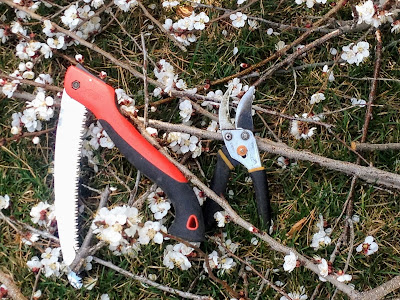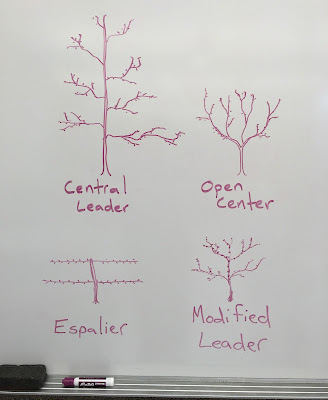How to Prune Apricot Trees
Apricot Trees, like peaches, are extremely prolific and often grow more fruit than their branches can support, that is, if their blossoms don't freeze during a late spring frost. It is important to understand which branches are productive and which ones can be eliminated to maximize the amount of light your tree collects, which will then increase fruit production, but this must be done without over burdening your tree with a heavy fruit load.
Apricot trees produce fruit on the new branches that grew last summer and small branches called spurs. The new fast growing branches are called water sprouts and each one will have two or three nodes, or flower buds every inch. If you have a four foot long water sprout, it could potentially produce more than 100 apricots. Remember this branch just grew last summer. It's not a large enough branch to support 100 apricots!
For regular updates on the care and pruning of fruit trees, please subscribe here:
Apricot trees are the first to bloom in the spring. It is important to complete the bulk of your pruning before the blossoms emerge.
Find out when is the best time to prune fruit trees.
What if you procrastinated? Is it okay to prune an apricot when it's in full bloom? Yes, but the blossoms are very fragile and you will probably knock off a lot of them before you're done. If you do knock off blossoms, think of it as a way to thin the fruit.
Apricot trees can be frustrating to some gardeners, especially in northern climates because they will often bloom before the frost free date. All of the pruning, and maintenance you put into your apricot tree might only yield a crop once every 4 or 5 years.
Find out other reasons why your fruit trees might not be producing fruit.
Apricot trees will do best with an open center or modified leader. These pruning forms will allow for plenty of sunlight to penetrate the canopy, yet keep your tree from getting too tall. It is important to develop a good structure when your fruit tree is still young. The structure of your tree will directly influence how well it holds up under heavy loads.
When you are done pruning, and assuming you didn't lose blossoms in a late sprint frost, it is important to thin the fruit from your tree to allow for plenty of space between each apricot. This will also lighten the fruit load on each branch, but you will have to be more aggressive thinning than most gardeners feel comfortable doing because a light thinning will only produce larger fruit and larger fruit will weigh as much or more than lots of little ones. If you don't aggressively thin your apricot tree, you might still have branches break under the heavy load.








Comments
Post a Comment